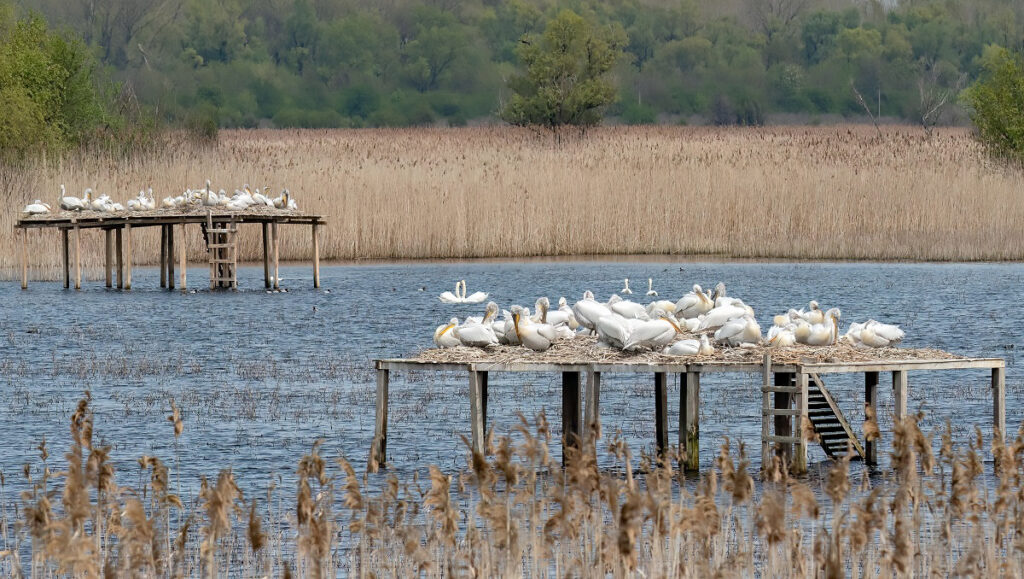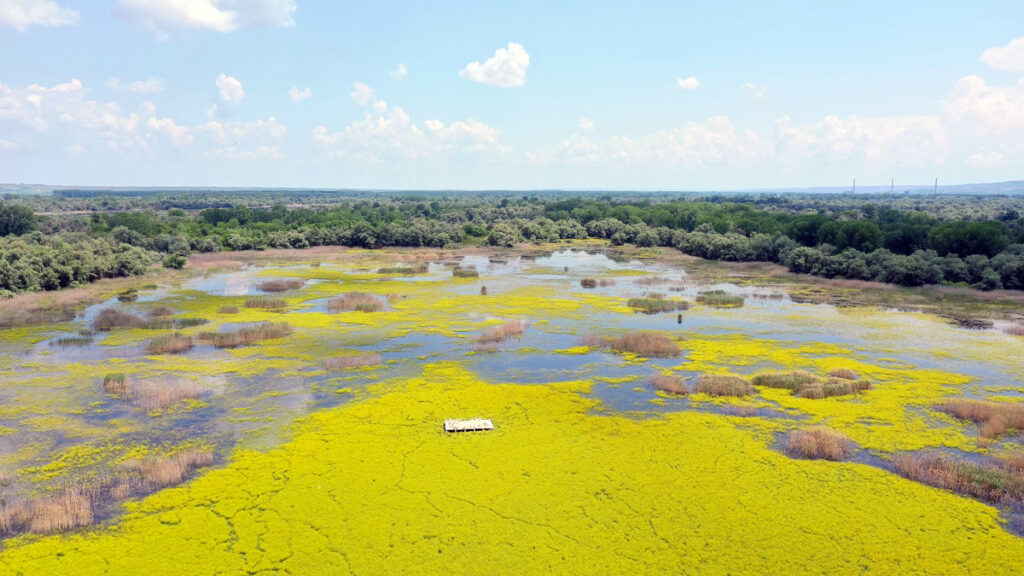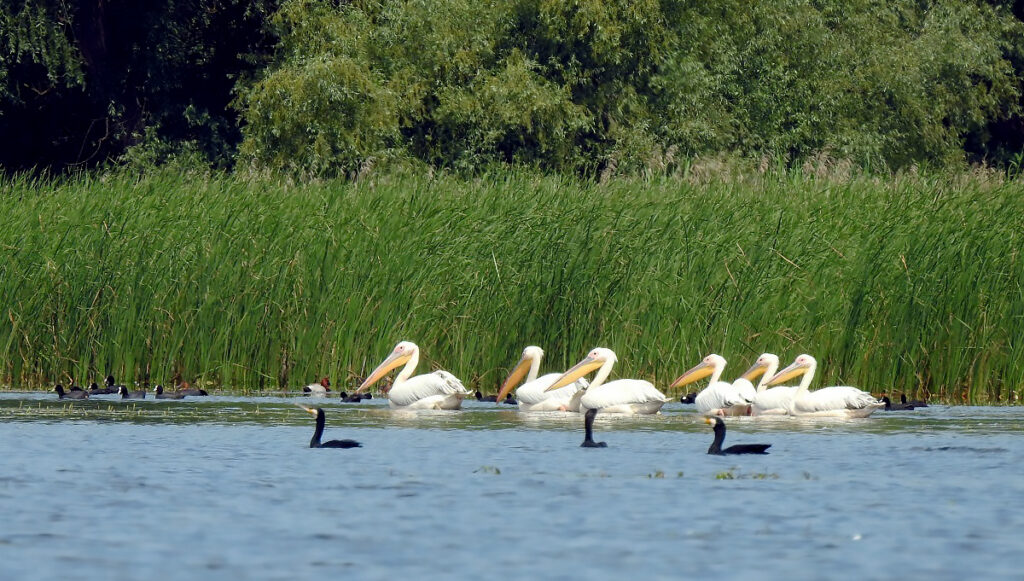In the period 24-26 May, the sixth international pelican census was held in South-Eastern Europe. It aimed at gathering information about the number and distribution in the region of two endangered keystone species – Dalmatian pelican and Great white pelican. The event was organized within the initiative “Pelican Way of LIFE” and coordinated by the Hellenic ornithological society (HOS).

Teams from the Bulgarian Society for Protection of Birds (BSPB) also participated in the international initiative. They visited the wetlands of the greatest importance to the two pelican species in the country – Srebarna Lake, Persin Island, protected area “Kalimok-Brashlen”, Burgas Lakes, the dams Ovcharitsa and Rozov Kladenets, Studen Kladenets, Varna Lake, the islands and the sandy slopes along the Danube.
308 Dalmatian pelicans and 2396 Great white pelicans in total were recorded in Bulgaria. The largest number of Dalmatian pelicans were observed in the three nesting sites of the species in the country: “Kalimok-Brashlen” protected area near the town of Tutrakan – 160 individuals, marshes of Persin Island – 93 individuals, and Srebarna Lake – 24 ind. The largest number of Great white pelicans were found in the region of the Burgas Lakes – 1551 ind., in the region of the city of Varna – 400 ind., and in the area of the Kardzhali and Studen Kladenets dams – 267 find. The number of Dalmatian pelicans recorded in the country during this spring census has decreased in comparison with last year’s data, but the national Great white pelican population has increased significantly.

During the Census special attention was paid to the three nesting sites of the Dalmatian Pelican in Bulgaria – Srebarna Lake, Persin Island, and the “Kalimok-Brushlen” Protected Area. At the moment, there are hatchlings in all the colonies. It is gratifying that the level of the Danube River in the current season is relatively high, which is of key importance for the condition of the wetlands on Persin Island and in the “Kalimok-Brushlen” Protected Area.
During the census, pelicans tagged with transmitters were not in the territory of Bulgaria. The Dalmatian pelicans tagged with transmitters earlier this year are in Romania: Nasi, Desi and Hristina are in the area of the Danube Delta, and Albena is in a dam located south of the Romanian city of Targovishte. The Great white pelican Vaya, tagged with a transmitter in September 2021, is actively migrating to Bulgaria, and the bird is now in Porsuk Dam, located in Central Turkey.

The data gathered during the Census will contribute to a better knowledge of the two pelican species and better planning of the conservation activities to ensure the comeback of these keystone species to Southeast Europe. Transboundary cooperation is of key importance for the protection of these birds.
The conservation activities on the Dalmatian Pelican are carried out in the framework of the international initiative “Pelican Way of LIFE” funded by the LIFE Programme of the European Union and Arcadia Foundation, and with the assistance in Bulgaria of the Whitley Fund for Nature.
